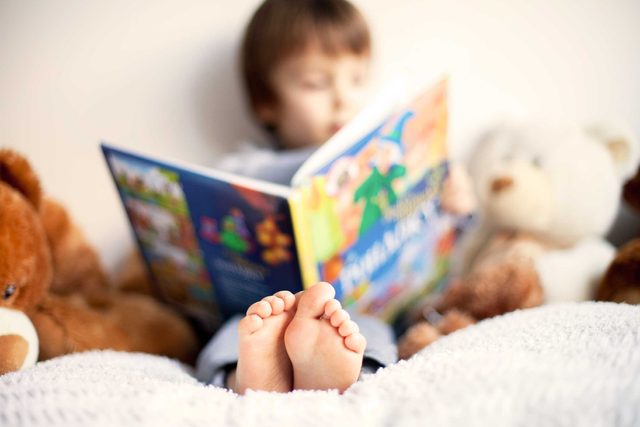
Read books with rich illustrations
The least helpful types of books for children under age 5: ones with simple photos—not illustrations—and minimal text. Compared with illustrated books, these don’t trigger as many conversation starters, which are critical to child development, says Michele Morrison, director of Training and Program Support at the Parent-Child Home Program, a non-profit that helps low-income families build early parent-child verbal interaction and learning at home. (The Reader’s Digest Foundation supports the Parent-Child Home Program). Don’t miss these classic children’s book quotes every adult needs to hear again.

Ask questions based on the illustrations
Children between 16 and 24 months add more words to their vocabularies on a daily basis than they do at any other age, says Morrison. The first and easiest words to learn and label from book illustrations are nouns like “dog” and “tree,” she says. If you see a picture of a dog, ask your toddler or preschooler such questions as “Do you see the dog?” “What color is the dog?” “What is the dog doing?” This base knowledge of nouns helps children add the other parts of speech more quickly. Soon, “dog” will turn into “Brown dog,” and then “Brown dog runs.” Check out these amazing ways babies and toddlers are way smarter than you think.
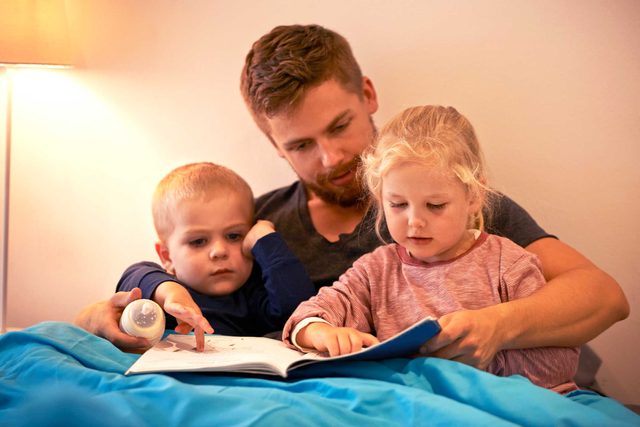
Cuddle your child in your arms while reading
This helps your child associate reading with feeling close and comfortable. This will eventually help your child become more confident with reading out loud to a class—something many kindergarten classes now require, says Morrison. By the way, if you’ve ever wondered—this is why it’s okay for parents to kiss their kids on the lips.
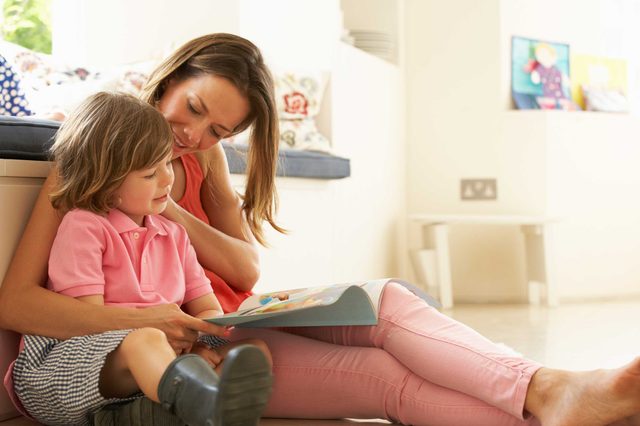
Share the obvious
Point out things about books that you may take for granted as an adult. Share the author’s name and describe what an author does, show your child how to hold a book, demonstrate how sentences are read from left to right, and what it’s like to turn the pages. Knowing these basic reading steps will make it easier for young children to read independently when they’re ready.
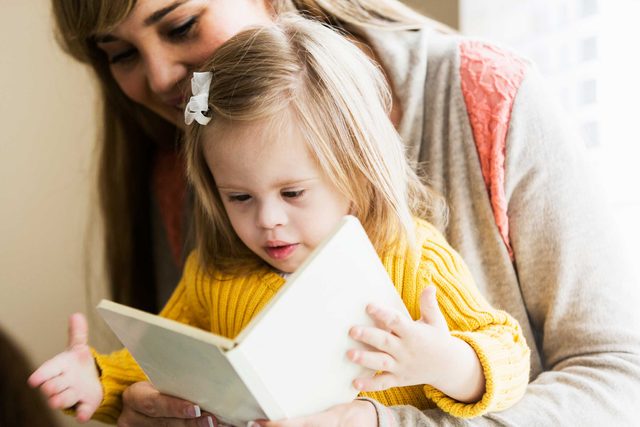
Relate plots to real life
If you’re reading a book about Suzie going to the grocery store, engage your child in conversation about a time she came to the grocery store with you. Ask open-ended questions (who, what, where, and why) to children age 3 and older to open a dialogue of storytelling. Relating a book’s plot to a real-life situation your child has experienced helps her better remember the book and vocabulary words.
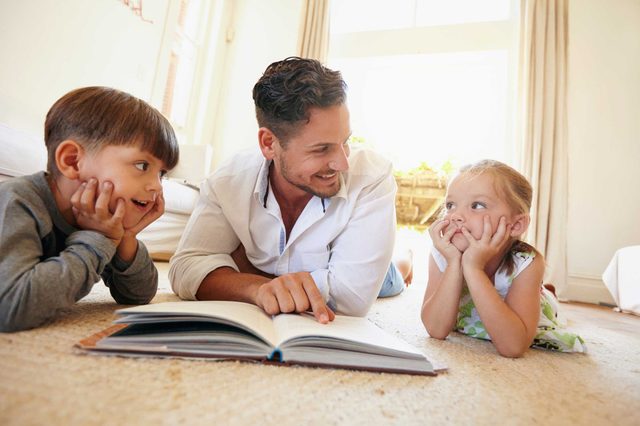
Use reading to spark conversation
It’s actually not important that you finish the entire book—although there are plenty of reasons why reading is important. What really matters is the nature of conversation you have during reading. A parent who readily responds to questions (even if they seem never-ending!) and has a back-and-forth style of talking with her child will help develop their kid’s cognitive skills and social development in the real world. Ask questions based on the illustrations and let the conversation flow from there.
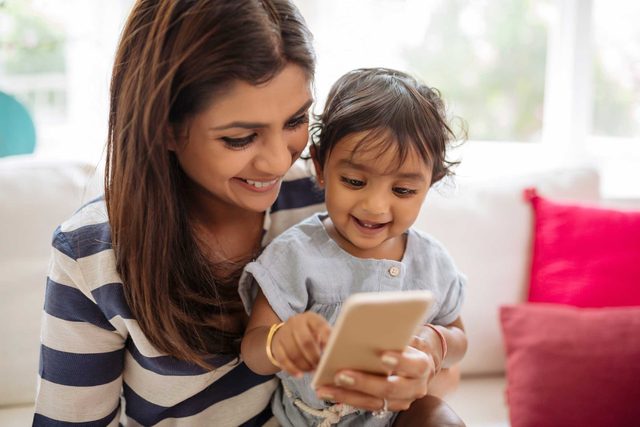
Don’t be afraid to imitate voices or make silly sounds
Wham! Bang! Mooooo! These onomatopoeias may feel embarrassing to say, but your child needs to hear them (and will adore seeing your silly side). The variety of sounds and voices act as an early literacy skill that will eventually lead to your child recognizing phonemes, or the sound units that make up larger words, says Morrison. Recognizing and hearing these sound units help your children to speak full words.

Stock up on interactive books for children under age 2
Lift-the-flap, pop-up, and textured books are great for interactive reading or kids with short attention spans because they keeps children occupied and engaged. Although these books can be gimmicky, they open the door to different types of reading as children get older. Try to read only one interactive or textured book before you read a regular illustrated book to keep them interested in both styles.
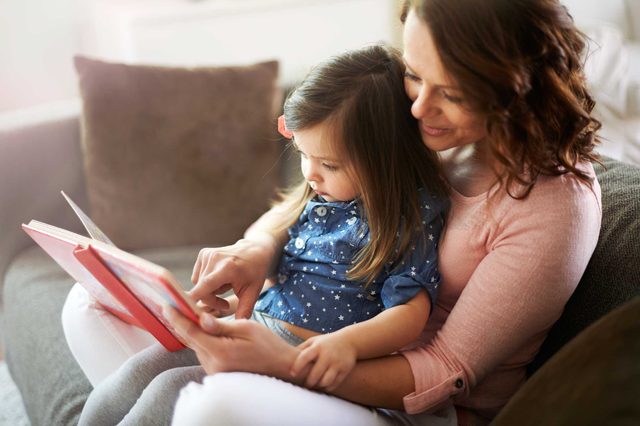
Ask prediction questions
“What do you think the mouse will do after he makes a mess?” “What do you think Harold will draw next?” By asking your child to predict what will happen next in the story or to remember what happened previously in the book, you help them learn to read on their own. Later, when your child picks up a chapter book for the first time, he won’t have trouble remembering where he left off. This foundational skill makes reading more fun—what child doesn’t love the ability to predict the ending?—and will help your kid become a better narrative storyteller.

Use illustrations to point out colors, shapes, and counting
Knowing how to count is just as important as learning to read—in fact, it comes first. According to Morrison, it’s one thing for your child to count from one to ten from memory, but it’s entirely different to be able to recognize and understand shapes, colors, and numbers out in the real world. Through such conversations while reading (“How many apples are in the basket?”) you help your child understand numbers and other math associations, which will make it easier for them to analyze real math problems in the future.
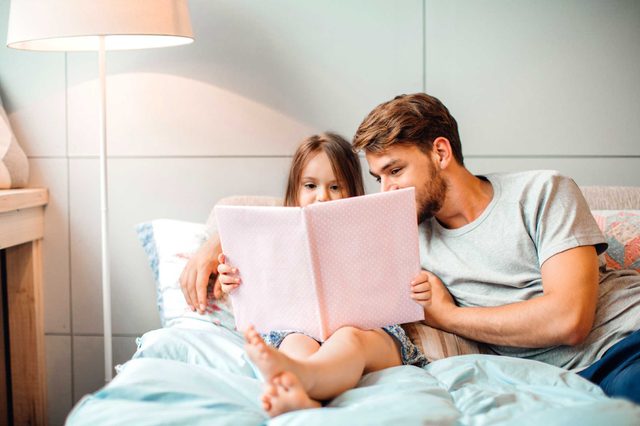
Follow your child’s lead
If you force your child to sit still and read, he’ll come to think of reading as a punishment. Instead, go with the flow of your child’s attention span. When he loses interest he may run around the room a bit, but come back to the book in a few minutes. Don’t give up when your child runs away or gets bored. Keep reading and commenting on the story to yourself; often he’ll circle back to you out of curiosity.